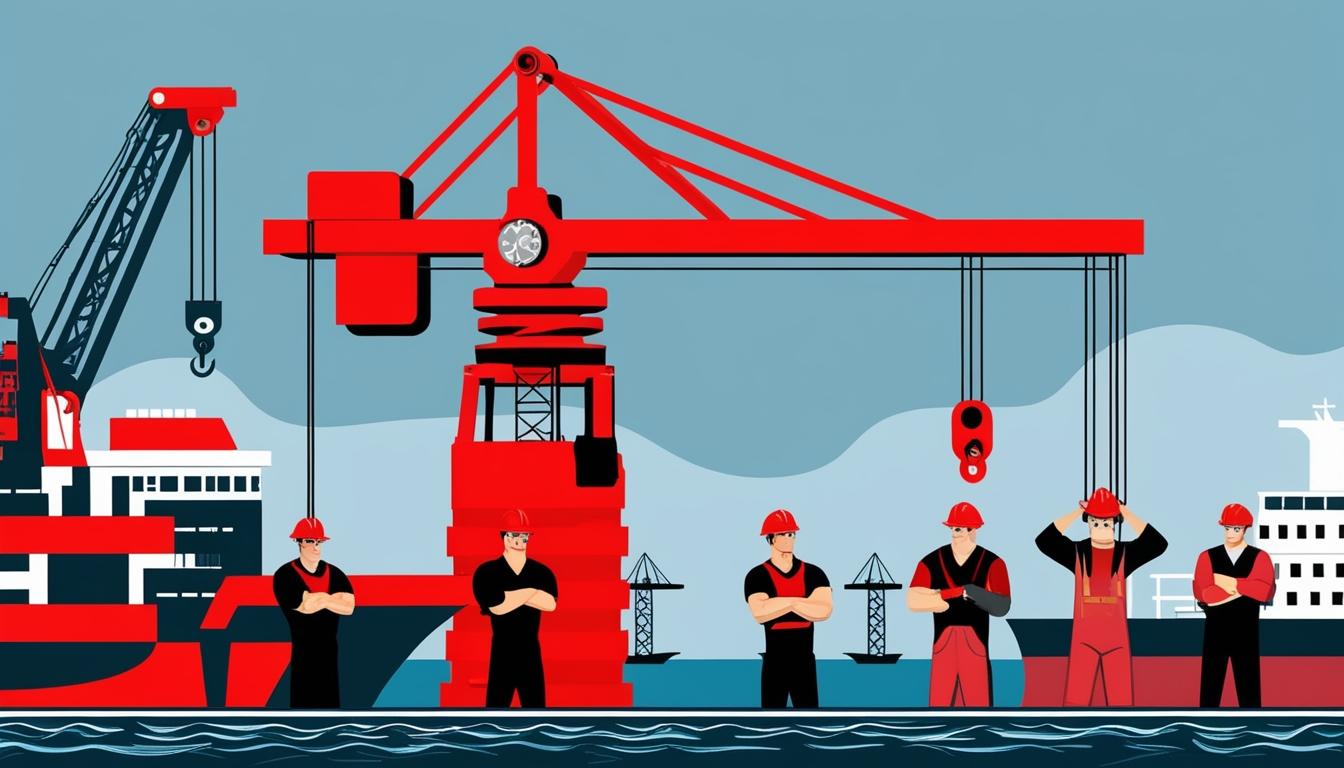Union dockworkers and industry leaders are currently in negotiations regarding the introduction of container-handling automation in the US, aimed at preventing a significant strike at East Coast and Gulf Coast ports. The discussions involve the International Longshoremen’s Association (ILA) and the United States Maritime Alliance, which convened privately to deliberate on how to expand port automation technology while mitigating employment concerns among longshore workers.
This situation arises as the existing contract between the ILA and port operators is set to expire on January 15, 2024. In a previous round of negotiations, dockworkers made headlines last October when they staged a three-day strike that resulted in a tentative agreement for a 62% pay increase over six years. However, union members must still approve this contract before receiving the enhanced wages, complicating the current discussions.
The automation issue is contentious, with the ILA vehemently opposing the addition of machines such as semi-automated cranes operated by software. Harold Daggett, the union's president, along with other officials, argue that these machines were not more efficient than human-operated systems and are instead intended to replace human labour under the guise of technological progress. Dennis Daggett, the union’s executive vice president, emphasised the potential threats to job security, stating that this push for automation prioritises corporate profits over well-paying jobs for American workers.
Industry representatives, however, argue that U.S. ports are becoming less competitive in comparison to more automated facilities in global shipping hubs like Rotterdam, Dubai, and Singapore. As the deadline for negotiations approaches, experts such as Jonathan Gold from the National Retail Federation commented on the limited timeframe available to reach an agreement, noting, “They’re not giving themselves a whole lot of time.”
The implications of a strike would be significant for the American economy, particularly as East and Gulf Coast ports handle over 50% of the country’s container shipping traffic, which includes diverse goods ranging from electronics to food supplies. Mark Zandi, chief economist at Moody’s Analytics, estimated that a strike lasting less than a week would not drastically affect the economy, provided inventories remain sufficient. However, disruptions of longer duration — particularly those surpassing a week — could escalate to daily economic losses, potentially exceeding $2 billion if a strike continued for over a month.
The threat of disruption has prompted several companies to act pre-emptively by rerouting shipments or encouraging clients to expedite their container pickups. Notably, Maersk has advised its customers to retrieve loaded containers from ports before the January deadline, while Hapag-Lloyd has introduced a “work disruption surcharge” for containers effective from January 20.
Under the current contract, dockworkers earn an hourly wage that positions them among the higher earners in the workforce; top paid dockworkers currently make approximately $39 an hour, translating to around $81,000 annually. The new tentative agreement would see this hourly rate rise to over $60. Historical data from the Waterfront Commission also indicated that a third of longshoremen in New York earned over $200,000 annually, including overtime and additional payments.
The debate on the efficacy of automation in port operations remains complex. A 2023 study by the Center for Innovation in Transport in Barcelona found no clear advantage of automated terminals over traditional ones, though they acknowledged that future technological progress could alter this situation. As negotiations progress, both sides face the challenge of balancing technological advancement with job security and economic stability in the shipping industry.
Source: Noah Wire Services
